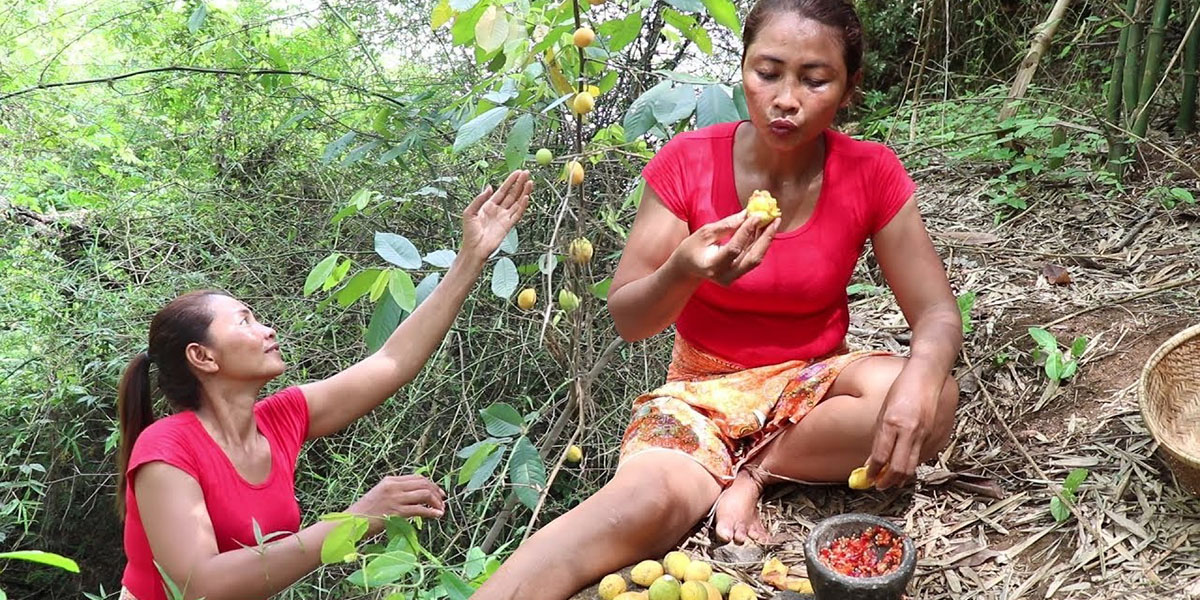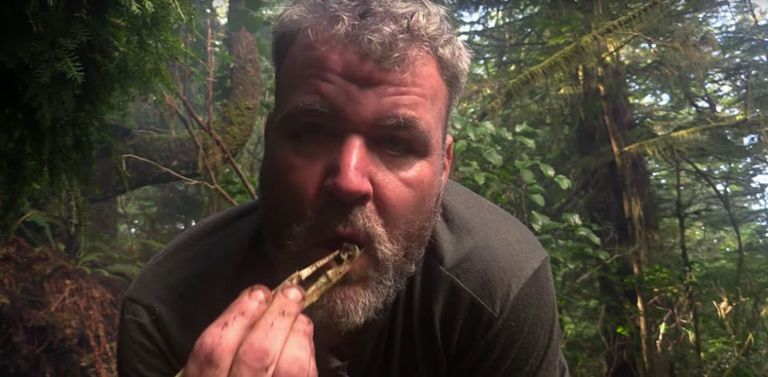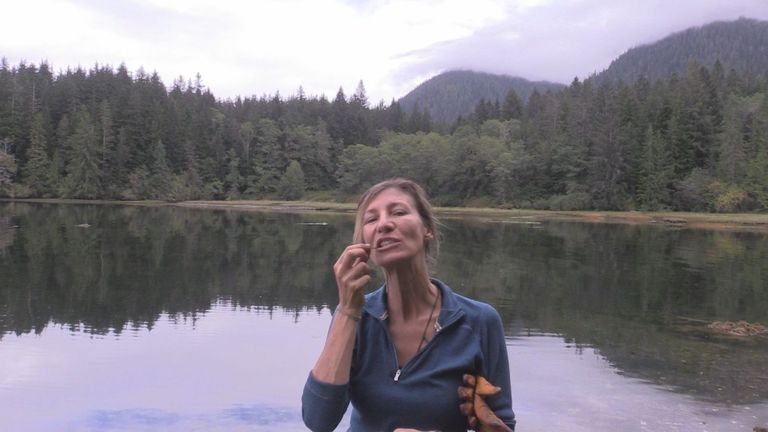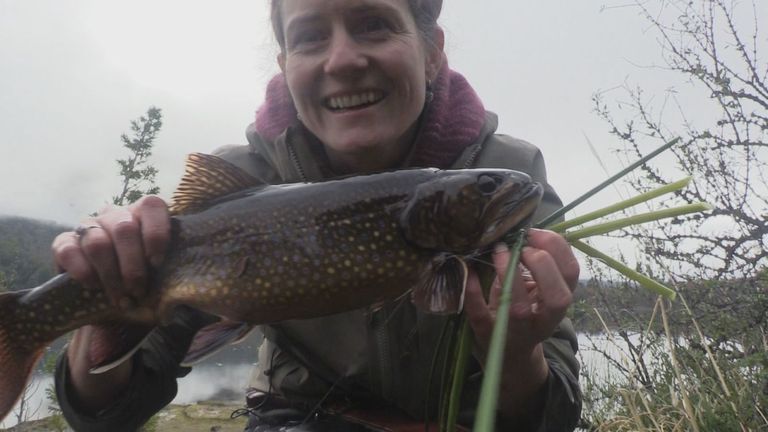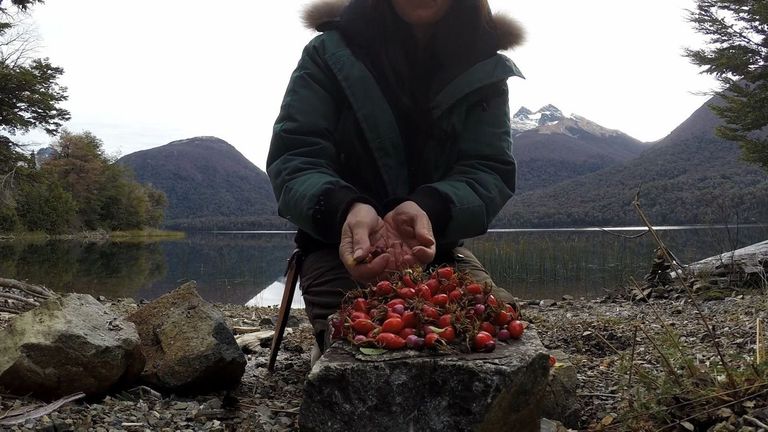You'd be surprised what you can eat out there. The wilderness is full of edible plants and creatures for the survivalist who knows where to look, and few people know this better than the contestants on the History Channel's show Alone, where survivalists compete to stay out in the wilderness for the longest with no outside assistance. It begins its third season tonight at 9 p.m. ET.
First thing's first: Don't eat anything unless you know what it is, especially plants. If you can't identify it, don't eat it. You should not only have a book to identify editable vegetation, but also take survival courses with experts who know the area before you start foraging for food in the wild. Here are some more tips from the survivalists of Alone about what to eat if you find yourself stranded in the wilderness.
25 Edible Plants, Fruits and Trees for Wilderness Survival
Insects Are Usually Safe, Other Bugs Are Not
A quick review of middle school science class: Insects have an exoskeleton, a three-part body, six legs, and one pair of antennae. Arachnids, such as spiders, ticks, and scorpions, have eight legs. Myriapoda, as their name suggests, are bugs with a myriad of legs, such as centipedes and millipedes.
Generally speaking, you can eat insects but should avoid other types of bugs like spiders and millipedes. There are a few important exceptions, however. Avoid eating anything that is hairy, like a bee. If the bug instead has a crunchy, chitinous exoskeleton, like ants, termites or crickets, you can dig in.
"Crickets have a nutty flavor when you roast them" says Alan Kay, a survival instructor and corrections officer from Georgia who won the first season of Alone. "And some ants have a lemony flavor." Kay lived off the land in Vancouver Island, British Columbia, for 56 days during the show, losing 60 pounds in the process.
"Usually for survival I lean on crickets and grasshoppers, things like that," he says. "Termites, ants, slugs, snails, earthworms, because it can be hard to actually capture an animal or catch a fish, but it's pretty easy to find insects. Just turn over a rock or a log and see what's living under there."
It might go without saying, but don't eat anything venomous. If it has a stinger or bright colors, leave it alone. You can safely eat scorpions, though. Just make sure you cut off the venomous tail first and then roast the sucker over a fire.
If it has more than six legs, is really hairy, or has bright colors, you should probably let it be. Otherwise, "envision you're eating a burrito," suggests Kay, and munch down on some crunchy six-legged critters.
Stay The Hell Away From Bright Colors
This is important to remember for insects and for everything else. Plants, amphibians, marine life, bugs—if something has bright colors, it's nature's way of telling you that eating it might kill you. The classic example is the beautiful and highly poisonous dart frog that lives in the rainforest.
"If things are real bright, and have bright reds and all that on them, that's kind of an indicator," says Kay. Let it be.
Do Your Homework Before Eating Plants
"You never eat a plant that you cannot positively identify," says Kay, who teaches edible and medicinal plants in his survivalist courses.
Flora can be trickier to identify than fauna. There are many instances where two plant species look similar, but one is edible and the other is not. Yarrow, for example, is a flowering plant with medicinal benefits, but it can be mistaken for highly toxic water hemlock if you haven't learned how to distinguish them, says Nicole Apelian, a survivalist from the Pacific Northwest who spent time camping in Botswana with the San Bushmen and was a contestant on the second season of Alone, also set in Vancouver Island.
A book of edible plants in the region is a good start, but some extra steps can help you make sure you don't end up eating something dangerous. "One of the first priorities that you have when you go to a new area is to find out what the indigenous people eat, and that local knowledge is usually the best source to find out about edible plants," Kay says.
Eating Cactus and Other Desert Edibles
Cook Your Food if You Can
There are a number of good reasons to cook your food in a survival situation. First and foremost, it will kill off most parasites that might be living in the animal you are about to eat. Becoming ill in a survival situation is a surefire way to find yourself in serious trouble.
Secondly, cooked food requires less energy to digest. Out in the wild, survival is a delicate balancing act of foraging and resting to preserve your energy, of burning and consuming calories. "If it's going to take you days tracking an animal through the woods with a bow and arrow and your chance of getting it is really low, then you shouldn't do it," says Megan Hanacek, a survivalist from British Columbia who competed on the third season of Alone, set in Patagonia.
Some simple ways to cook in the wild are to skewer something and roast it over a fire, or fry food on a hot rock placed around the coals, says Kay. You can also smoke meat if you have the time—48 hours will make it last for two to four weeks, says Hanacek. But the best way to cook something in a survival situation is to boil it, assuming you have a metal container. This way, you can drink the water afterward to make sure you don't lose any of the valuable nutrition.
Get Comfortable With Mollusks and Worms
In a survival situation, you might have to eat slugs, snails, worms and other gooey critters. Insects, despite our general revulsion, are actually pretty tame when it comes to flavor and texture.
"People think banana slugs are strange to eat because they are so slimy, but I would just stick a stick through them and hold them over my fire until all of the slime fell off, and then they were delicious, as long as you take the guts out," Apelian says. Just make sure you cook any slugs you eat to kill off those parasites.
You Can Eat Birds and Snakes
As long as you pluck and cook them, you can eat any birds you can lay your hands on. Pigeons, crows, and seagulls are all edible. Catching them can be difficult, but if you are fortunate enough to have a gun you should have an easy time getting a few birds, and you might even be able to pull it off with a net.
Snakes, also, are good for food, but it's best to avoid anything venomous, so do your research. "The texture of snake meat can be off-putting to some," says Kay. "Snakes are very chewy because they are basically one long muscle. I find them to be delicious."
The Sea Is Your Best Friend
Perhaps the best source of food in the wild, short of bringing down a big game animal, is low tide. Depending on where you are, you can find crabs, clams, oysters, eels, small fish, and plenty of marine plant life. Apelian ate 26 different species while she was surviving in Vancouver Island, most of which she found in the inner tidal zone.
"At low tide there's going to be something for you," says Kay, who ate a lot of limpets on Vancouver Island, which are marine snails that cling to the rocks. "There's a nice bit of meat in there and it doesn't have to be cooked, you just scrape 'em out with your finger and eat 'em."
You can even eat isopods, crustaceans that live in the sea and in fresh water. "They look like cockroaches," says Apelian, "and there were a bunch at my site. They are totally edible, so I was eating those, but I got to say those were a little hard to look at in my pot of food, and they have a certain crunch because it's mostly exoskeleton."
You Don't Just Need Food, You Need Vitamins
"A key part of it is minerals and vitamins," says Hanacek. Vitamin B and C, for example, are water soluble vitamins and they start depleting from your body immediately, she explains. "Funky things start happening to your body when you start depleting vitamins."
Fortunately, you can find vitamin sources pretty commonly in the wild if you know what you are looking for. You can boil spruce needles and licorice roots and lichen into tea, for example, and other flora like rose hip will give you a great source of vitamin C while white fish can get you B. Crunchy crabs and insects are also a great source of calcium.
If you want to get a better sense of what is safe to eat in the wild, look up a local course on survival training. Also check out season 3 of Alone to learn what the survivalists ate in Patagonia, and who was able to stay out in the wild the longest.
